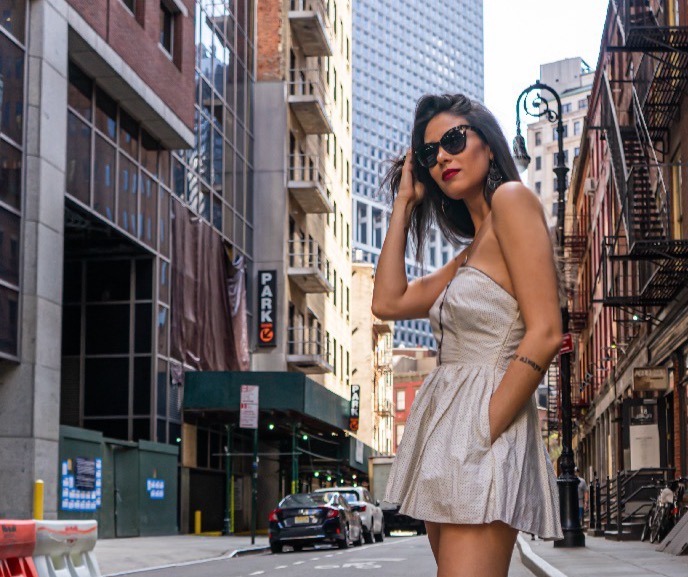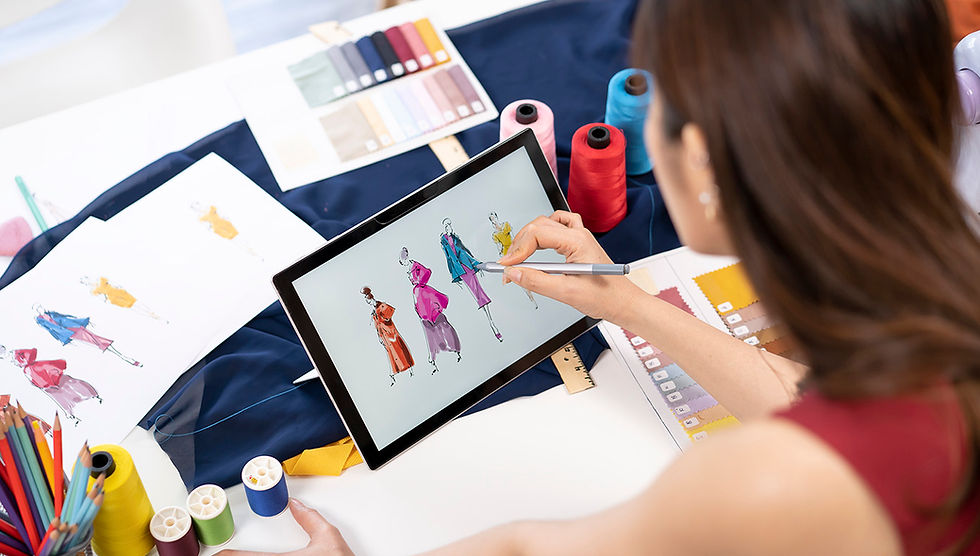INSIDE THE FASHION INDUSTRY - The Circular Economy: Redefining Production and Consumption
- Barbara Sessim

- Jan 4, 2024
- 3 min read

Welcome to the first "INSIDE THE FASHION INDUSTRY" blog of 2024! I hope you have high expectations for this blog series because I have a great selection of content planned for this year. To start, I want to discuss a topic that affects everyone in this industry—whether you are already in the market selling your clothing line or still contemplating taking the first step and starting your own fashion brand.
The last couple of years have witnessed a noteworthy shift in the industry's focus, departing from the conventional linear model of production and consumption to a more sustainable and environmentally responsible framework. The concept of the circular economy has emerged as a guiding principle for fashion brands looking to mitigate the industry's environmental impact and has made a significant impression on emerging designers who have adopted the "slow fashion" business model with the intention of transitioning into a more cost-effective and sustainable production. This blog delves into the transformative journey of the fashion industry towards embracing these circular practices, exploring how brands are redefining production and consumption to cultivate a more sustainable and circular fashion ecosystem.
Understanding the Circular Economy:
At its core, the circular economy challenges the traditional "take, make, dispose" approach by promoting a system where resources are continually reused, recycled, and repurposed. In the context of fashion, this means reimagining the entire lifecycle of a garment—from design and production to consumption and disposal. The aim is to create a closed-loop system that minimizes waste, reduces environmental footprint, and maximizes the value of resources.
Circular Practices in Product Development:
Fashion brands are increasingly integrating circular principles into their product development processes. Designers are rethinking materials, opting for sustainable and recyclable fabrics that have a minimal impact on the environment. Innovations such as bio-based materials and upcycled textiles are gaining prominence, offering a viable alternative to traditional, resource-intensive materials.
Additionally, the modular design is gaining traction, allowing garments to be easily disassembled and reassembled. This not only extends the lifespan of products but also facilitates repairs and upgrades, contributing to a more sustainable and resource-efficient approach.
In other words, designers have been opting for natural materials instead of plastic, and a crucial aspect is the incorporation of atemporal styles!
Every time a new product is designed, the development process begins anew – new patterns, new fabric sourcing, new prototypes, new samples, new fittings. Creating atemporal styles that can adapt from season to season and can be produced in different materials is an excellent way to practice this circular economy. Moreover, it serves as an effective method to save on development costs!
Circular Production Methods:
The production phase is a critical juncture where the fashion industry can significantly reduce its ecological footprint. Brands are embracing circular production methods by incorporating eco-friendly manufacturing processes, optimizing energy consumption, and minimizing water usage. Furthermore, technology is playing a pivotal role in enhancing efficiency, with 3D printing and digital manufacturing enabling more precise production while minimizing material waste - and costs!
This is a great example of how AI is playing a huge role in fashion. Product development and production management methods are adapting to technological resources not only because using metaverse can be (significantly) cost wise, but also because this directly reflects in a circular economy by avoiding waste.
Collaborative Initiatives and Closed-Loop Systems:
The shift towards a circular economy in fashion is not a solitary endeavor. Brands are increasingly engaging in collaborative initiatives and partnerships to foster a circular ecosystem. Collaborations between fashion houses, recyclers, and technology companies are becoming more common, promoting knowledge sharing and the development of innovative solutions.
Closed-loop systems, where products are designed to be easily recyclable or biodegradable, are gaining momentum. Brands are taking responsibility for the entire lifecycle of their products, from production to post-consumer disposal, thereby contributing to a more sustainable and circular supply chain.
Consumer Engagement and Education:
A crucial aspect of the circular economy in fashion is engaging consumers in the process. Brands are investing in educating consumers about the environmental impact of their choices and encouraging responsible consumption. Repair and recycling programs are being implemented to extend the lifespan of garments, reducing the need for constant new purchases. In other words, encouraging customers to understand and adapt to the new “slow fashion”.
As the fashion industry navigates the complexities of sustainability, the adoption of circular practices marks a promising stride towards a more responsible future. Brands that embrace the circular economy are not only contributing to environmental conservation but are also meeting the growing demand for ethical and sustainable fashion. Through innovative design, circular production methods, and collaborative initiatives, the fashion industry is redefining its narrative, proving that style and sustainability can coexist harmoniously in the circular economy. The journey towards a truly circular fashion ecosystem requires ongoing commitment and collaboration, but the potential benefits for the planet and the industry make it a path worth pursuing - especially for new emerging brands that are still making a name in the market and developing their brand identity!







Comments